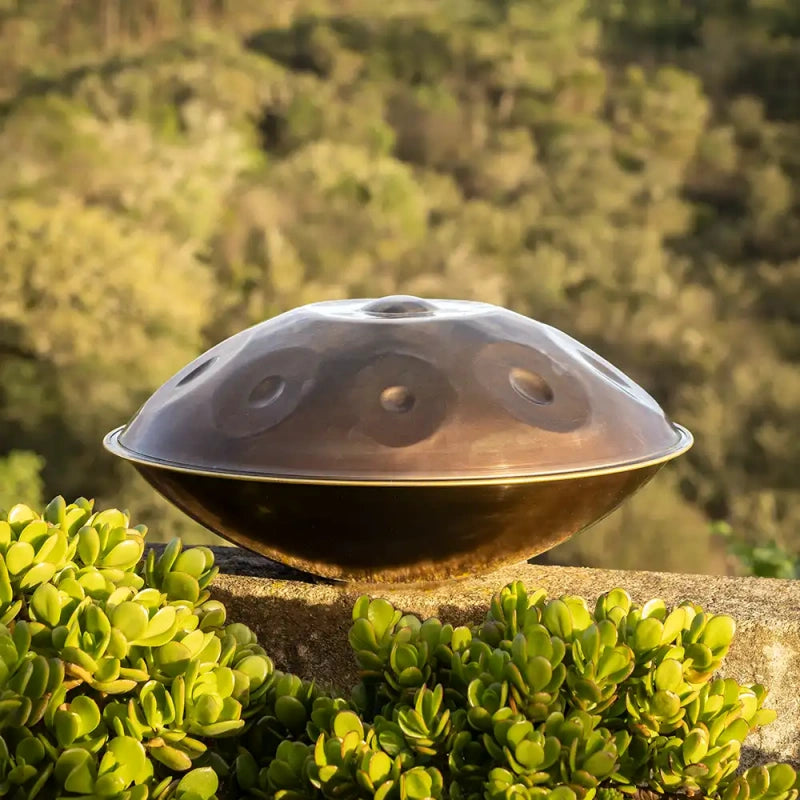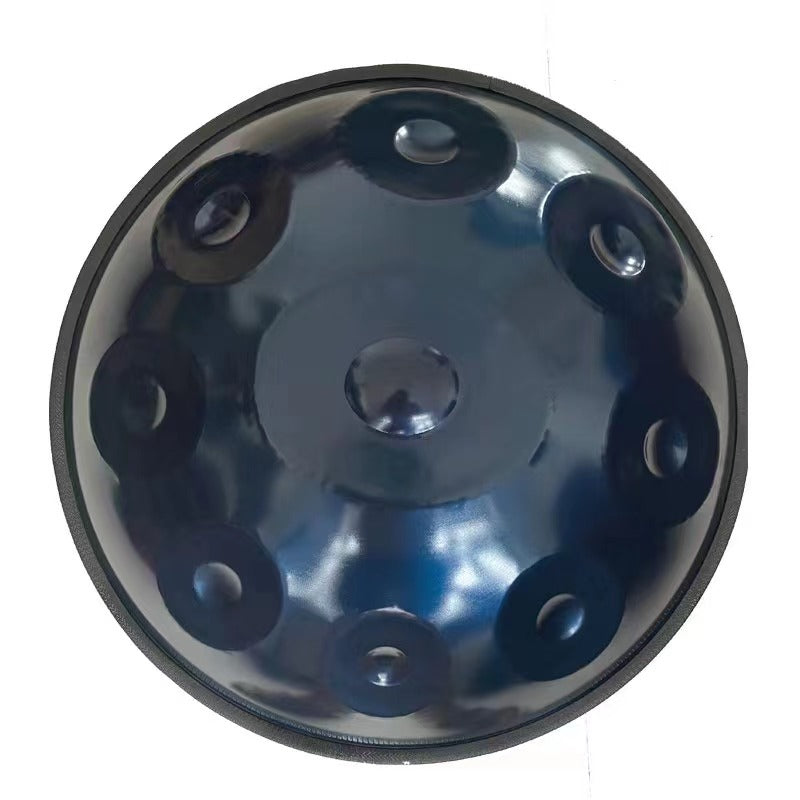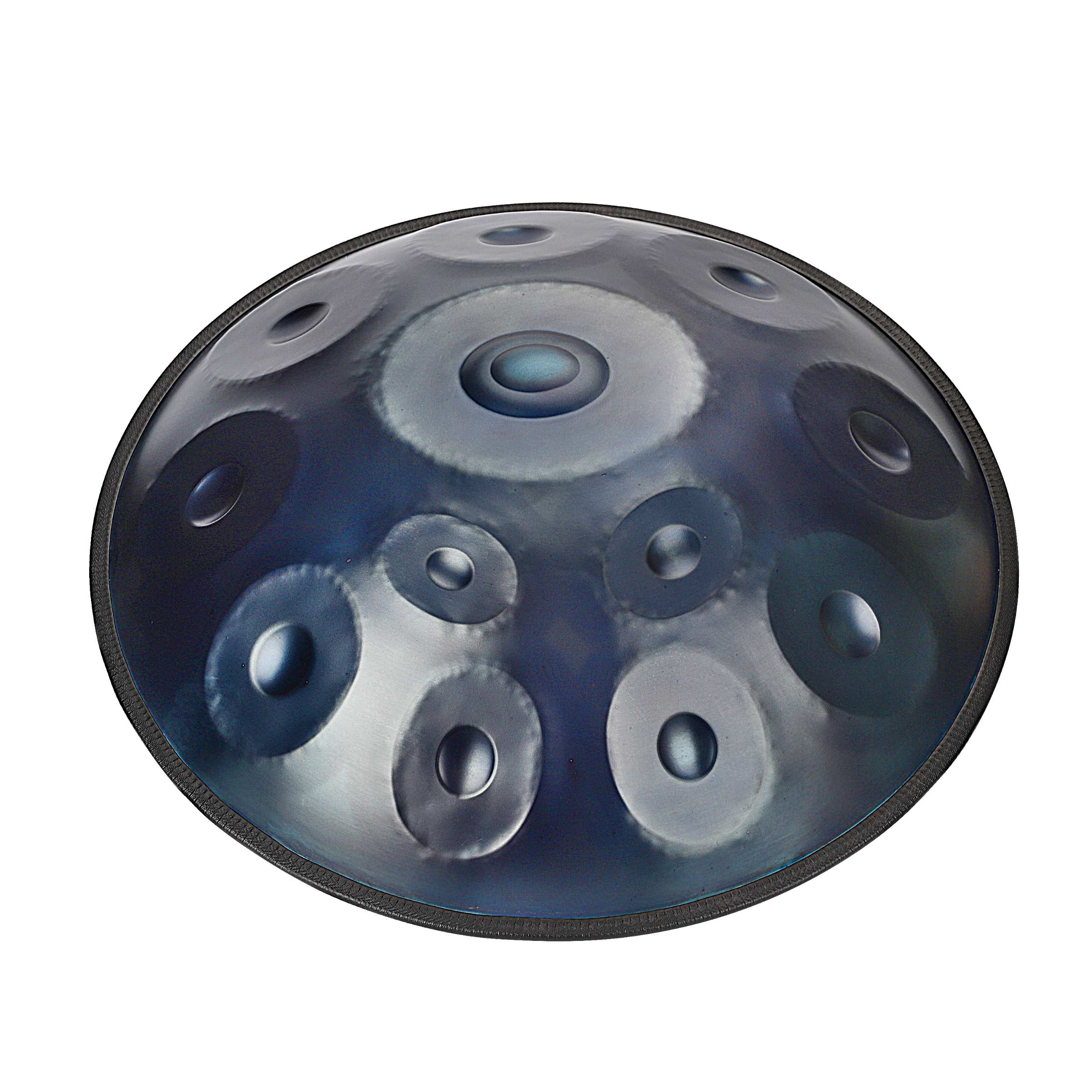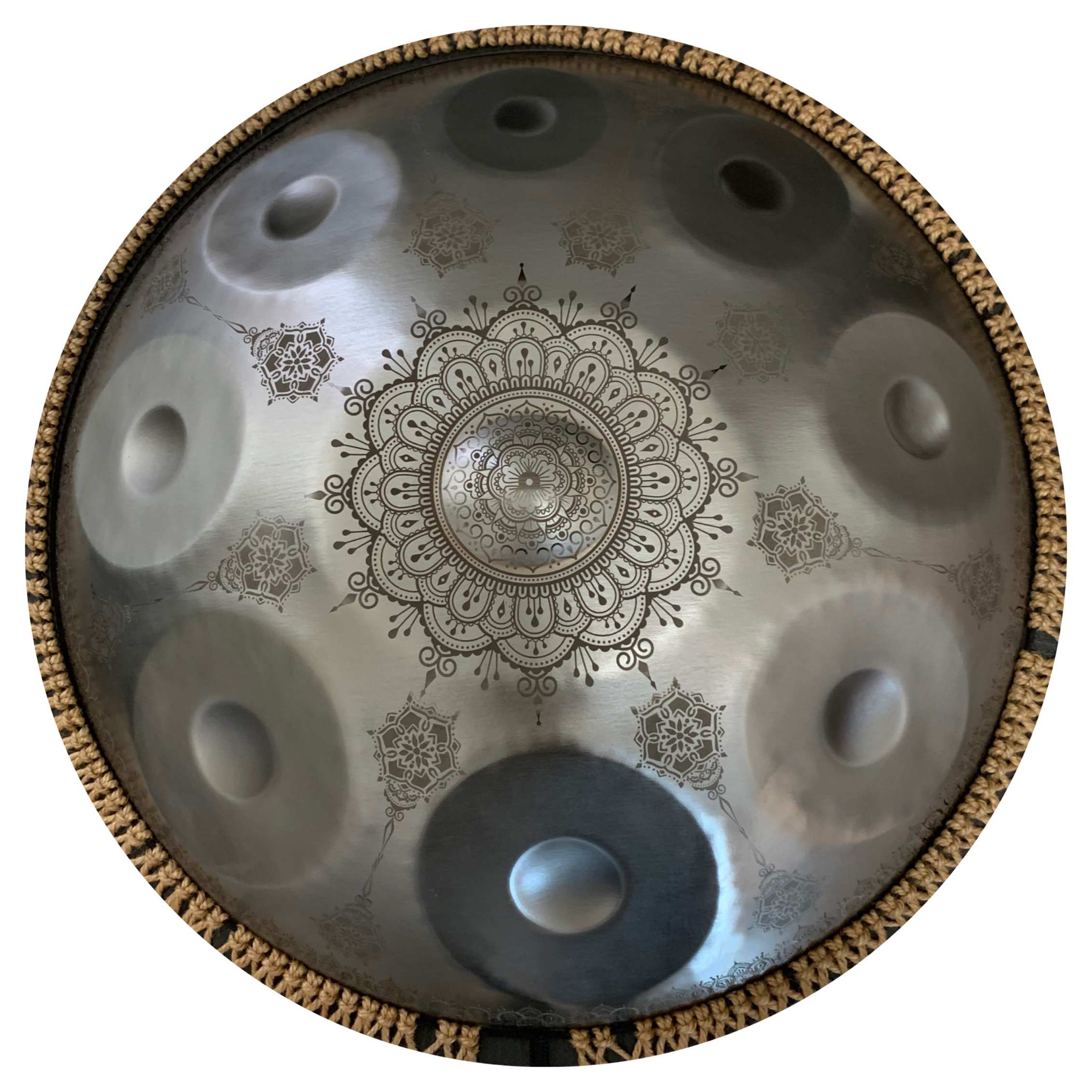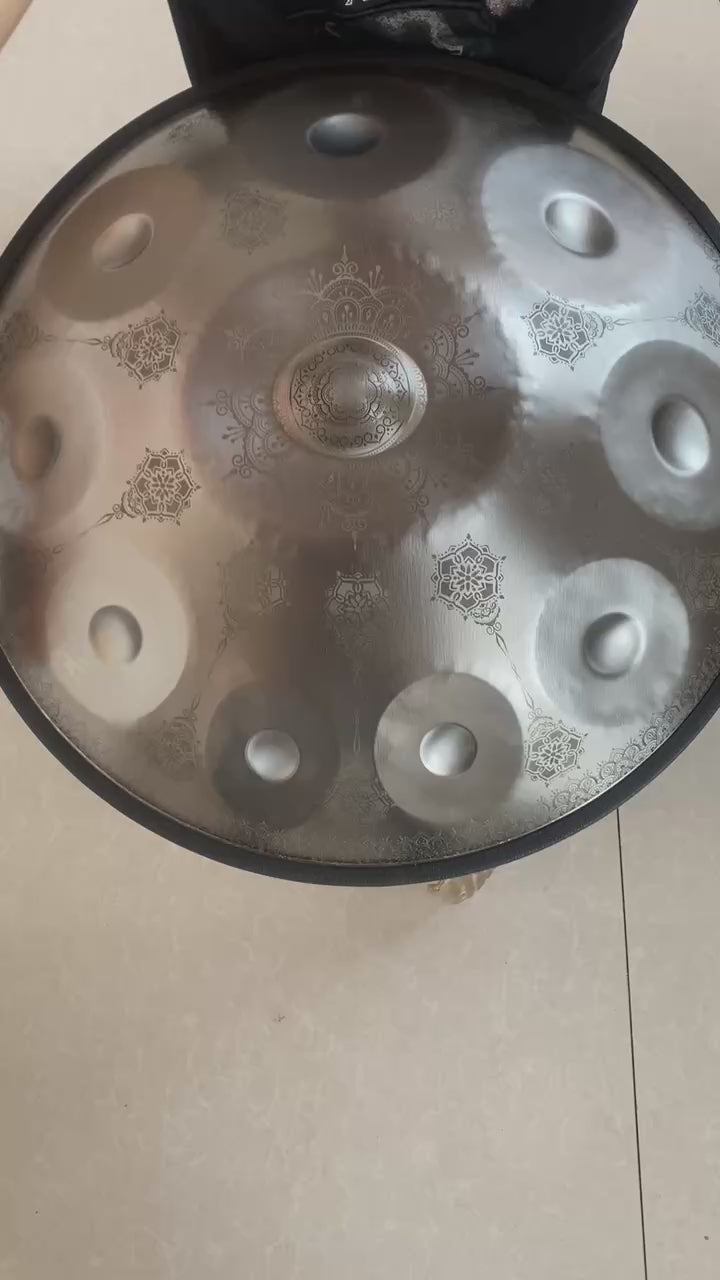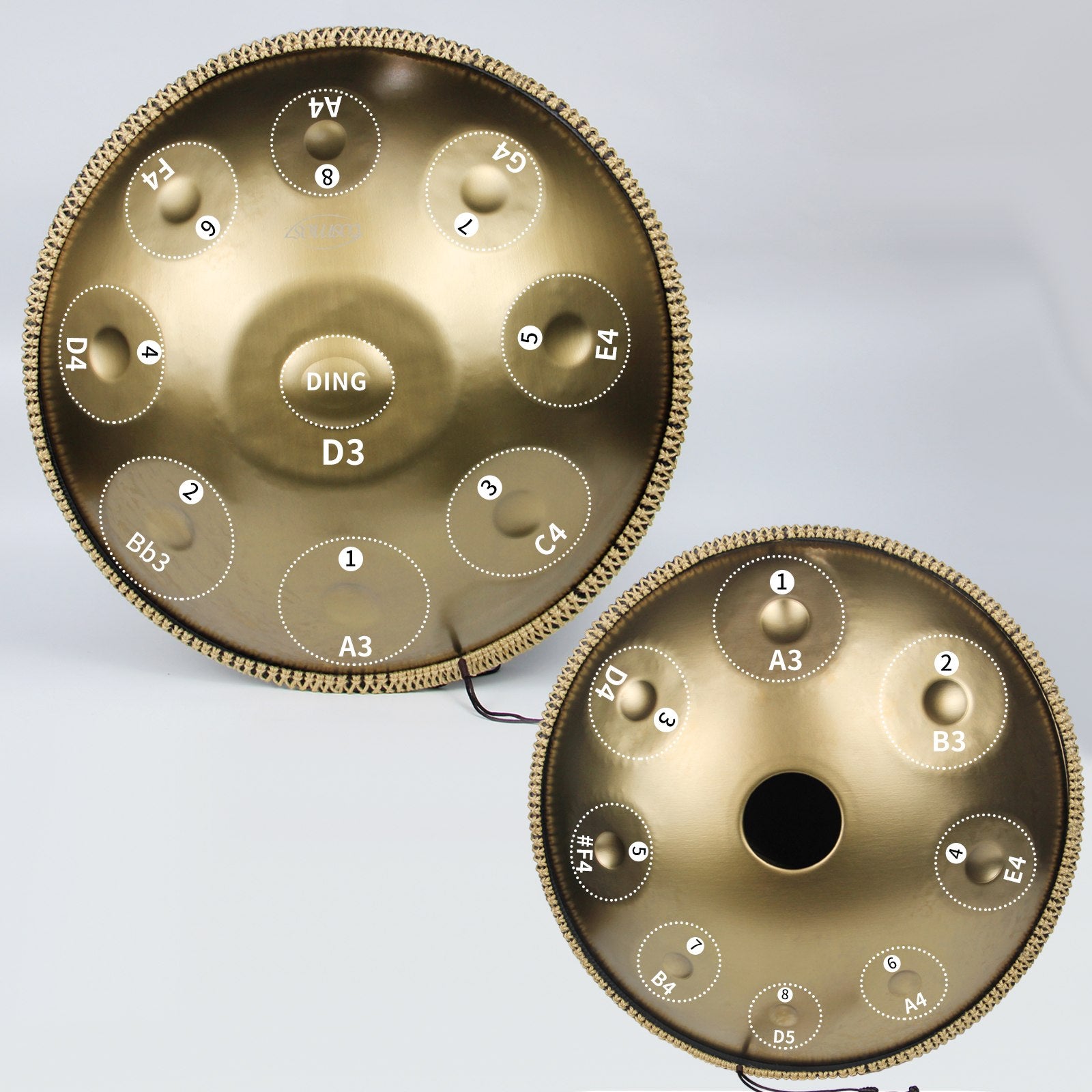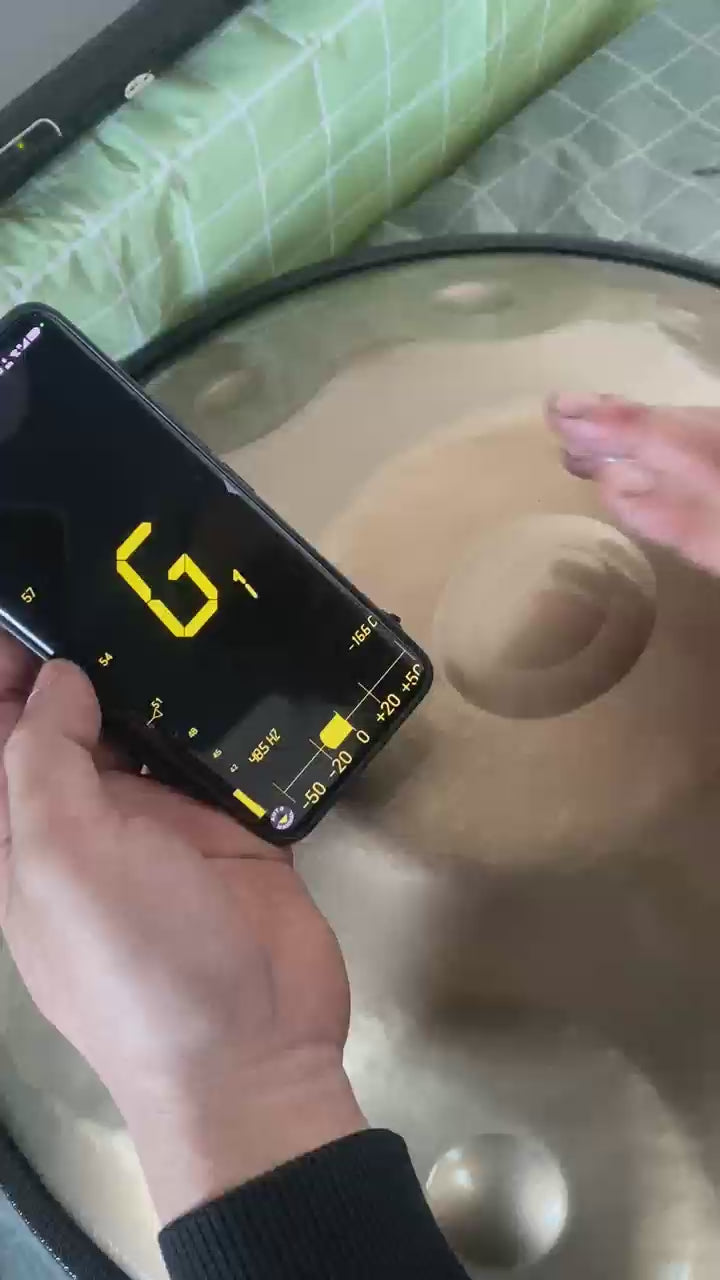Introduction
Vous vous demandez si vous avez déjà entendu à quoi ressemble le son d'un handpan ? Eh bien, il y a de fortes chances que vous l'ayez probablement fait ! Le handpan est un instrument qui exsude du mysticisme et captive les auditeurs avec ses sons magnifiques. L'origine des handpans appartient à la famille des tambours en acier. Permettez-nous de vous donner une leçon d'histoire sur ce bel instrument de musique connu sous le nom de handpan, hang drum ou pantam.
Qu'est-ce qu'un Handpan, un Hang Drum ou un Pantam ?
Les noms du handpan proviennent d'une grande famille d'instruments de musique fabriqués à partir de feuilles d'acier. Nous accordons chaque handpan à une seule échelle, ce qui vous permet de créer de la belle musique sans trop d'effort ; ainsi, en faisant de cet instrument un choix parfait tant pour les débutants que pour les musiciens expérimentés.
La naissance du Handpan
Un fait amusant : le tout premier handpan a été construit par Felix Rohner et Sabina Schärer de PANArt Hangbau AG à Berne, en Suisse. Ce n'est pas tout ! Un percussionniste, Reto Weber, a permis la conversion du steelpan en un instrument portable et jouable à la main à la fin des années 1990. Après de nombreuses expériences, le premier handpan, appelé le "Hang", est né. Le mot "Hang" vient du mot allemand bernois pour "main."

Production précoce et popularité
PANArt a introduit le Hang de première génération en 2001 au Musikmesse de Francfort. Ces instruments ont divers motifs sonores et PANArt les a commercialisés de 2001 à 2005. Chaque Hang avait huit notes disposées en cercle autour d'une note centrale, appelée le "ding". Le Hang est devenu populaire lorsque des vidéos de l'instrument ont commencé à faire sensation sur YouTube en 2005.
L'insaisissable accrochage
Alors que la demande pour le Hang augmentait, en obtenir un devenait un défi. PANArt exigeait des acheteurs potentiels qu'ils envoient des lettres manuscrites expliquant leur désir pour l'instrument. Les acheteurs attendaient souvent des mois ou des années pour une réponse. Malgré cela, le son unique du Hang et sa disponibilité limitée n'ont fait qu'accroître son attrait. Vous devez noter que tous les handpans ne sont pas des Hangs. Kyle Cox de Pantheon Steel a inventé le terme ‘handpan’ pour décrire des instruments similaires.
La connexion Steel Pan
Les racines du handpan viennent des steel pans de Trinité-et-Tobago. Les habitants de Trinité utilisaient des fûts de pétrole pour créer des instruments de musique, créant ainsi le steel pan. Cet instrument, perfectionné par Ellie Mannette et d'autres, a influencé la création du handpan.

Evolution du tuning
L'art de l'accord des acier et des handpans a évolué au fil des ans. Les premiers tambours en acier avaient des fréquences fondamentales uniques, mais les instruments modernes incluent souvent des harmoniques supplémentaires. Le rapport de fréquence 1:2:3, représentant la fondamentale, l'octave et la quinte composée, est un aspect clé de l'accord de haute qualité des handpans.
Autres influences
En plus de la steel pan, le handpan s'inspire également des gongs et des instruments de Gamelan, connus pour leurs structures en forme de dôme. PANArt a intégré ces caractéristiques dans ses conceptions, contribuant au son distinctif du handpan.
L'essor des nouveaux fabricants de handpan
Avec l'arrêt de la production de Hang par PANArt en 2014, le paysage des handpans a subi une transformation significative. PANArt a concentré son attention sur des instruments de musique autres que le hang drum, si bien que de nombreux nouveaux fabricants de handpan sont entrés dans l'industrie avec de nouveaux designs et des innovations pour améliorer le potentiel de l'instrument. Ces nouveaux fabricants ont commencé à repousser les limites du design, de l'accord et de l'artisanat des handpans, menant à une renaissance dans le développement de l'instrument.
Innovations en Design
Une innovation clé digne d'intérêt dans le hang drum a été l'augmentation du nombre de notes. Les premiers handpans, y compris le Hang original, comportaient généralement huit à neuf notes. Cependant, les fabricants contemporains ont expérimenté l'ajout de plus de notes, parfois jusqu'à quinze ou plus. Ces notes supplémentaires ont élargi les possibilités mélodiques et harmoniques de l'instrument, attirant un public plus large de musiciens.
Nouveaux agencements et méthodes de réglage
La disposition circulaire traditionnelle des notes autour du "ding" central a également connu des variations créatives. Certains fabricants ont introduit des dispositions alternatives qui s'adaptent à différents styles de jeu et genres musicaux. De plus, les avancées dans les méthodes d'accordage ont abouti à des instruments plus précis et stables. Les fabricants modernes de handpan utilisent des techniques et des outils sophistiqués pour offrir un son plus riche avec un accordage cohérent sur toute sa gamme.
Matériaux et construction améliorés
L'innovation dans les matériaux a encore amélioré la qualité et la durabilité des handpans. Alors que les premiers handpans étaient fabriqués en acier nitruré pour prévenir la rouille et améliorer la qualité sonore, de nouveaux matériaux et traitements sont en cours de développement. Ceux-ci incluent l'acier inoxydable et d'autres alliages propriétaires qui offrent une meilleure résistance à la corrosion et des propriétés acoustiques améliorées. Les techniques de construction ont également évolué, certains fabricants utilisant des méthodes de travail des métaux avancées pour créer des handpans avec une projection sonore et une résonance supérieures.
La Communauté Croissante
De nouveaux fabricants de handpan ont favorisé la croissance d'une communauté de musiciens, d'autres fabricants de handpan et d'enthousiastes du hang drum. L'industrie en ligne a également commencé à prospérer. Les gens enseignent le handpan et partagent des connaissances à travers les réseaux sociaux et les forums en ligne. De plus, des festivals et des rassemblements spécifiques célébrant le handpan sont devenus populaires.
Terminologie du handpan
Vous pouvez utiliser « handpan », « hang drum » et « pantam » de manière interchangeable ; cependant, notez que chaque terme signifie quelque chose de plus. Connaître les nuances entourant ces termes permet une appréciation plus profonde de l'instrument.
Poêle à main
"Handpan" est le terme le plus largement accepté et couramment utilisé pour décrire cette famille d'instruments. Coincé par Kyle Cox de Pantheon Steel, le terme englobe tous les instruments en acier joués à la main qui partagent la forme convexe et l'agencement tonal du Hang original. Il sert de nom générique, reconnaissant la variété d'instruments produits par différents fabricants à travers le monde.

Tambour suspendu
"Hang drum" fait le plus souvent référence à d'autres handpans, cependant, il est plus précis de l'utiliser pour les instruments originaux construits par PANArt. Il est important de faire cette distinction car cela honore les créateurs originaux du handpan.

Au verset
"Pantam" combine "pan" (une casserole en acier) et "ghatam," qui est un tambour en argile indien. Pantam met en avant l'importance des différentes traditions musicales et leur implication dans la création des handpans. Il est particulièrement populaire dans certaines régions et parmi des communautés spécifiques de joueurs. "Pantam" souligne l'attrait mondial de l'instrument et sa capacité à transcender les frontières culturelles.

Jouer du Handpan
Vous devez savoir que le handpan est très accessible. De nombreux instruments de musique traditionnels nécessitent une pratique intensive, mais ce n'est pas le cas pour le hang drum ! Le hang drum a un design intentionnellement intuitif qui aide les débutants et les experts à créer des mélodies agréables. Un autre fait amusant ! Toutes les notes de handpan sont positionnées de manière à produire une mélodie musicalement cohérente.
Qualités Méditatives et Thérapeutiques
Jouer d'un handpan est thérapeutique et aide votre esprit à se détendre ! L'acte de jouer du handpan peut être profondément méditatif, vous aidant à concentrer votre esprit et à entrer dans un état de relaxation. Les guérisseurs sonores et les thérapeutes utilisent la musique du handpan dans leurs pratiques pour aider les clients à atteindre un environnement paisible.
Conclusion
Les Hang Drums et Handpans ont une riche histoire et des mélodies envoûtantes ! Peu importe si vous l'appelez handpan, hang drum ou Pantam, son évolution des steelpans à Trinidad jusqu'aux mains des joueurs modernes montre son attrait.

